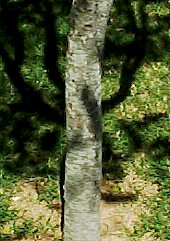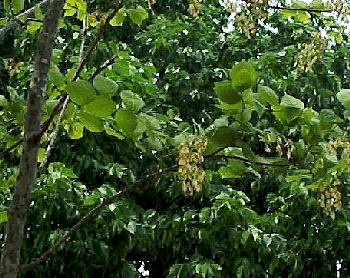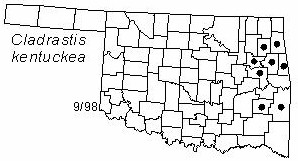

Small tree to 10 m (30 ft) tall and 30 cm (1 ft) diameter with a broad rounded crown. Bark smooth, thin, gray. Twigs hairy when young, becoming shiny brown. Buds small, conical, without scales, covered by the base of the leafstalk, no terminal bud. Leaves alternate, pinnately compound, 20-35 cm (8-14 in) long. Leaflets 7-11, almost sessile, elliptical, 6-10 cm (2.4-4 in) long and 3-7.5 cm (1.2-3 in) wide, pointed at ends, margins entire, with many conspicuous straight parallel side veins, shiny green above, pale green below. Flowers numerous in drooping panicles to 30 cm (12 in) long, fragrant, white, about 3 cm (1.2 in) long, blooming in late Spring. Fruits legumes hanging in clusters, oblong, narrow, flat, thin, light brown, 5-8 cm (2-3.1 in) long, maturing in late Summer, soon falling before splitting.
Distribution: Rare and scattered in the southern Appalachians, the Ozarks, and the Ouachitas.
Habitat: Moist upland forests, often on or near limestone cliffs.
NWI status: none
Comment:Yellowood is rare in its natural habitat, but is often planted as an ornamental. The wood was formerly used to produce a yellow dye. Cladrastis is from a Greek phrase meaning brittle-branched; kentukea refers to the state of Kentucky.
Distribution in Oklahoma: 
BACK
NEXT
RETURN TO INDEX
Last update: 9/9/99
 Go to Oklahoma Biological Survey Home Page
Go to Oklahoma Biological Survey Home Page
 Disclaimer
Disclaimer